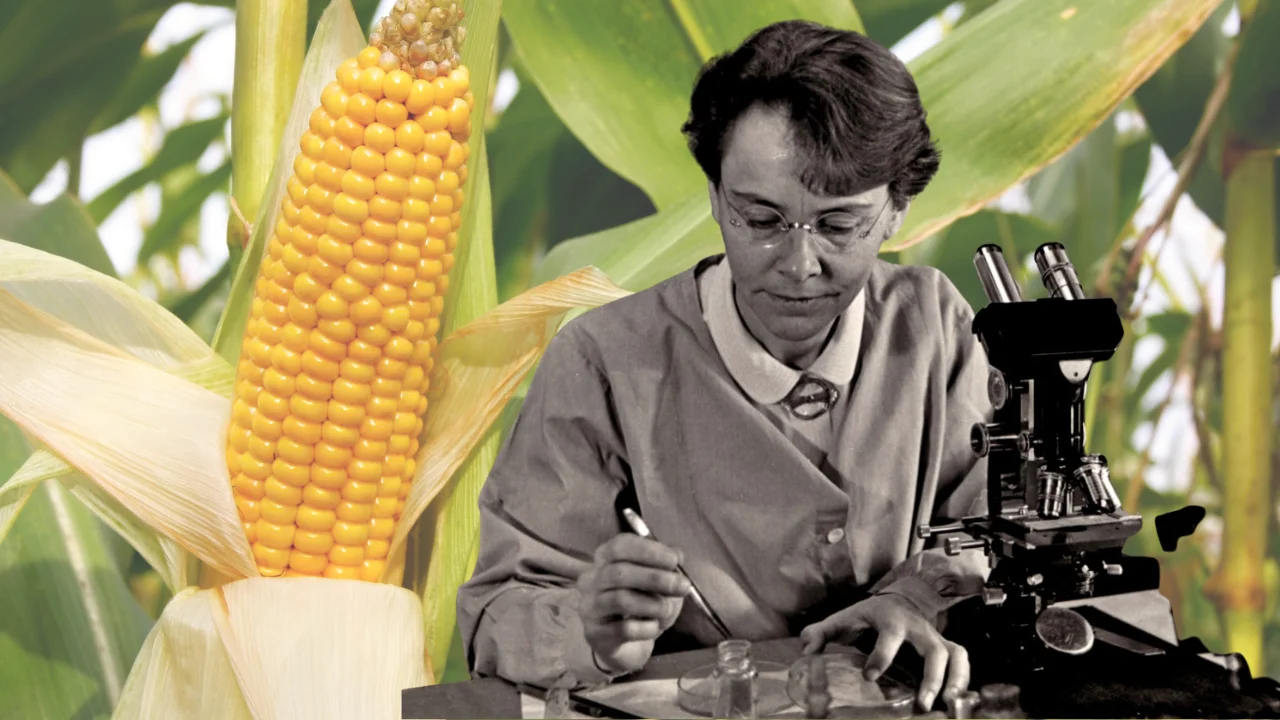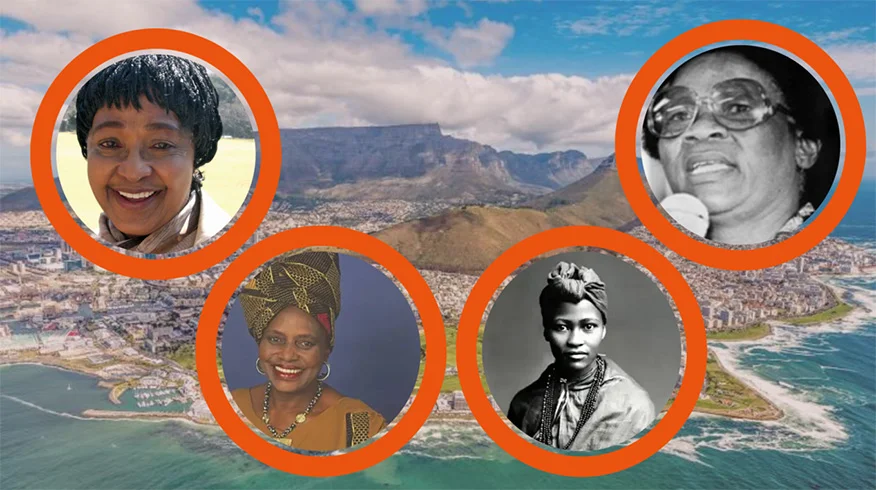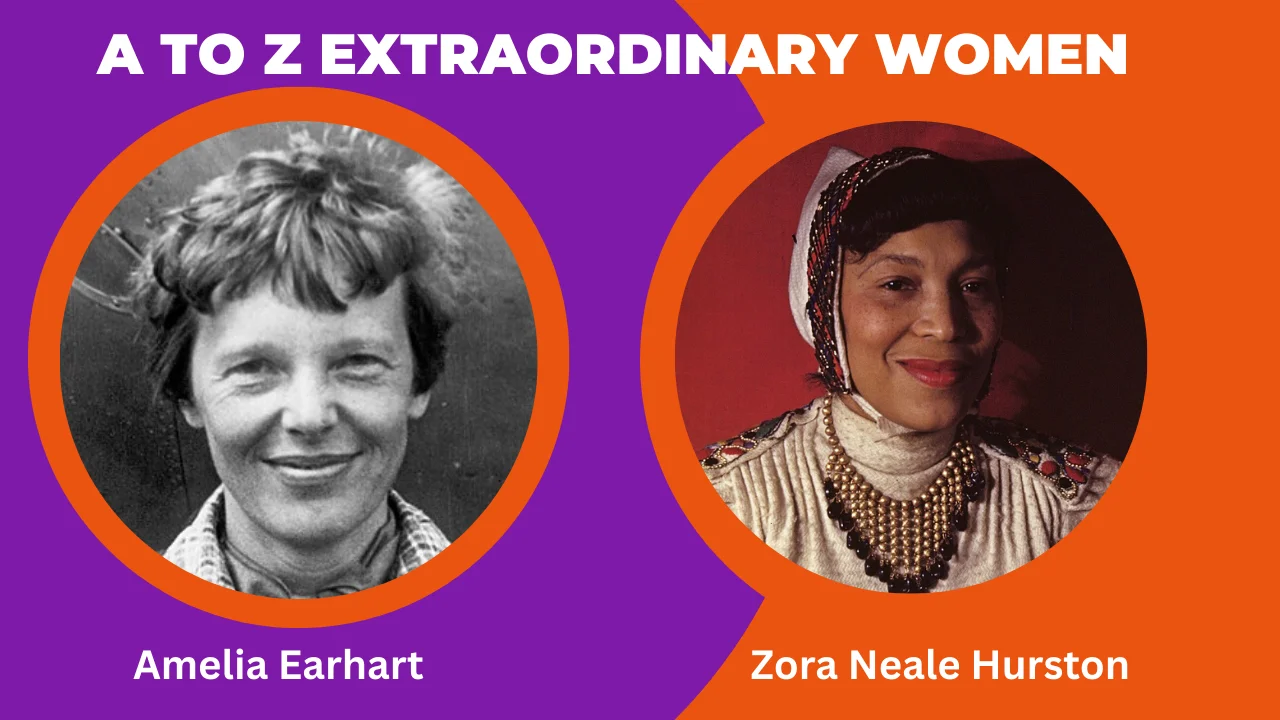The Genetic Genius: How Barbara McClintock Changed Science
17 Mar 2025
Featured

In the early days, only a few women created impressive impacts in the science field. These impacts helped to improve the quality of life and living in one way or the other.
One of these great women in science back then was Barbara McClintock. Barbara McClintock was an excellent scientist and cytogeneticist who made groundbreaking discoveries in genetics. McClintock contributed so much to genetics, which led to her winning a Nobel Prize in Physiology or Medicine in 1983. This made become the first person to win the prize unshared.
[embed]https://youtu.be/UigsKe1FgN4[/embed]
Lesson 1: Breaking Gender Barriers: McClintock breaks the gender barrier against women by being the first woman to win a Nobel Prize unshared. This history helps to motivate the younger generations that regardless of gender, they can do and achieve great things.
Barbara McClintock was born on June 16, 1902 in Hartford, Connecticut, to parents Thomas Henry (homeopathic physician) and Sara Handy McClintock.
At a young age, McClintock was an independent child, a trait she later identified as her capacity to be alone. McClintock, at three, was sent to live with her aunt and uncle in Brooklyn, New York. This decision was to help ease some financial burden off McClintock’s parents while her father established his medical practice.
Growing up, McClintock was close to her father but had an uneasy relationship with her mother from childhood.
McClintock’s family moved from Hartford, Connecticut, to Brooklyn in 1908. It was there that McClintock completed her secondary education in 1919. While at school, McClintock discovered her passion and interest in science.
After her secondary education, McClintock wanted to continue her studies at Cornell University's College of Agriculture. However, her mother resisted the idea of sending McClintock to college due to the fear of her becoming unmarriageable.
Although this wanted to prevent her from going to college, McClintock's father allowed her to go. McClintock matriculated at Cornell in 1919.
Lesson 2: Overcoming obstacles - As a young girl growing up, McClintock faced an obstacle when her mother wanted to stop her from furthering her education. She later overcame the challenge through the intervention of her father.
At the Cornell College of Agriculture, McClintock participated in Student Government and took up music, specifically Jazz. McClintock studied botany and received her BSc in 1923.
Before her graduation in 1921, McClintock discovered her interest in genetics started when she took her first course in the field. The lecturer, C.B. Hutchison, who taught McClintock her first genetic course, was impressed by her interest and invited her to participate in the graduate genetics course at Cornell in 1922 through the telephone.
According to McClintock, She pointed that the invitation from Hutchinson was the catalyst of her interest in genetics. McClintock later went to graduate school, where she got her MSc in Botany in 1925 and her PhD in Botany in 1927, respectively. Both degrees were from Cornell.
Lesson 3: Follow your interest- McClintock followed her interest and dream to become a cytogenetics. She dedicated her time to studying in the field of genetics & botany. McClintock graduated with two degrees and went further ahead to pursue a career in genetics.
McClintock’s cytogenetics journey started when she was appointed the Botany instructor during her graduate and postgraduate studies. As a botany instructor, McClintock was instrumental in assembling a group that studied the new field of cytogenetics in maize—forming a group that studied the new field of cytogenetics in maize.
The group McClintock assembled included plant breeders and cytologists like Marcus Rhoades, future Nobel laureate George Beadle, and Harriet Creighton. The group was supported by Rollins A. Emerson, head of the Plant breeding department, although he was not a cytologist.
McClintock also got to work with Lowell Fitz Randolph and Lester W. Sharp as a research assistant.
As a research scientist, McClintock's cytogenetic research focused on developing techniques to visualize and characterize maize chromosomes using a carmine staining.
McClintock showed for the first time the morphology of the ten maize chromosomes. This was possible because she observed cells from the microspore rather than the root tips. Also, by studying the morphology of the chromosomes, McClintock linked specific chromosome groups of traits, which were inherited together.
In 1930, McClintock was the first person to describe the cross-shaped interaction of homologous chromosomes during meiosis.

source; wikipedia[/caption]
In 1931, McClintock and Creighton proved the link between chromosomal crossover during meiosis and the recombination of genetic traits.
During their research, they observed how the recombination of chromosomes seen under a microscope correlated with new traits.
Before their discovery, it had only been hypothesized that genetic recombination could occur during meiosis, although it had not been shown genetically.
That same year, McClintock also published the first genetic map for maize showing the order of three genes on maize chromosome 9. This genetic map for maize provided necessary data for the crossing-over study she published with Creighton.
The data also showed that crossing-over occurs in sister chromatids and homologous chromosomes.
“No two plants are exactly alike. They are all different. And as a consequence, you have to know that difference. I start with the seedling and don’t want to leave it. I don’t feel I know the story if I don’t watch the plant. So I know every plant in the field. I know them intimately. And I find it a great pleasure to know them.” - Barbara McClintock.
In 1938, McClintock went ahead to produce a cytogenetic analysis of the centromere, describing the organization and function of the centromere, as well as the fact that it can divide.
McClintock’s work and the support of her colleagues enabled her to publish breakthrough publications, which led her to be awarded several postdoctoral fellowships from the National Research Council.
The funding from these fellowships enabled her to continue studying genetics at Cornell, the University of Missouri, and the California Institute of Technology, where she worked with E. G. Anderson.
During the summers of 1931 and 1932, McClintock worked alongside geneticist Lewis Stadler at the University of Missouri. Lewis Stadler introduced McClintock to the use of X-rays as a mutagen.
At the university, McClintock worked with X-ray mutagenized maize, thereby identifying ring chromosomes, which form when the ends of a single chromosome fuse together after radiation damage.
The experiment served as evidence that helped McClintock hypothesize that there must be a structure on the chromosome tip that would ensure stability.
McClintock also showed that the loss of ring chromosomes at meiosis caused variegation in maize foliage in generations after irradiation resulting from chromosomal deletion.
During her period at the university, McClintock demonstrated the presence of the nucleolus organizer region on a region on maize chromosome 6 for the assembly of the nucleolus.
In 1933, McClintock established that cells can be damaged when nonhomologous recombination occurs. She hypothesized that the tips of chromosomes are protected by telomeres.
Throughout McClintock's career, she received numerous fellowships. She received the Guggenheim Foundation fellowship that helped her undergo six months of training in Germany between 1933 and 1934.
During this period, McClintock wanted to work with Curt Stern but couldn't as Stern migrated to the United States. McClintock had no option but to work with geneticist Richard B. Goldschmidt. Richard B. Goldschmidt was a director of the Kaiser Wilhelm Institute for Biology in Berlin.
McClintock left Germany earlier due to mounting political tension in Europe and returned to Cornell but found that the university would not hire a woman professor.
In 1936, she accepted an Assistant Professorship offered to her by Lewis Stadler in the Department of Botany at the University of Missouri in Columbia. While still at Cornell, she was supported by a two-year Rockefeller Foundation grant obtained through Emerson's efforts.
As an assistant professor, McClintock expanded her research on the effect of X-rays on maize cytogenetics. Here, McClintock discovered that large-scale mutations can arise from the breaking, fusion, and bridging of chromosomes. This BFB cycle, discovered by McClintock, leads to chromosomal instability, which means daughter cells have a different number of chromosomes from the cell that produced them.
McClintock’s research at the university was progressing, but she wasn’t happy and satisfied with her position there. According to McClintock, she was excluded from faculty meetings and was not made aware of positions available at other institutions. Stalder initially created McClintock's position, and her stay so far at the university depended on his presence. McClintock believed she couldn’t gain more tenure at Missouri with his absence.
McClintock later decided to leave the university and move on since she had lost trust in her employer and the university administration after discovering that her job would be in jeopardy if Stadler were to leave for Caltech, as he had considered doing.
In 1941, after leaving Missouri, McClintock accepted a visiting Professorship at Columbia University. She was also offered a full-time research position at Cold Spring Harbor Laboratory.
McClintock spent the rest of her career working at Cold Spring Harbor Laboratory, where she was off teaching duties and had the freedom to conduct whatever research she felt.
During McClintock’s time at the Cold Spring Harbor Laboratory, She began to study the mosaic colour patterns of maize at the genetic level. From the experiment and research, she noted that the kernel patterns were too unstable and changed frequently over several generations to be considered mutations.

source: wikipedia[/caption]
McClintock furthermore observed by studying successive generations of maize plants, instead of being locked into place giving fixed instructions from generation to generation, some genes could move around or “transpose” within chromosomes, switching physical traits on or off according to certain “controlling elements.”
“Transposition can provide a means to rapidly reorganize the genome in response to environmental stress. In this sense, mutations produced by transposition are a source of variation to drive the process of evolution.” - Barbara McClintock.
During her lifetime, McClintock was awarded numerous awards and honors. But one of her notable awards remains the Nobel Prize for Physiology or Medicine that McClintock won in 1983.
Lesson: Persistent - McClintock never had a smooth career. She faced numerous challenges. McClintock had difficulties convincing others to believe and validate her work, but she never gave up on her work. McClintock later won a Nobel Prize for the same research work.
McClintock had no track record of getting married or having children. McClintock died of natural causes in Huntington, New York, on September 2, 1992, at the age of 90.
Reference:
Tags
Women
Scientist
Latest Posts
Tags
- Women27
- Scientist9
- Author6
- Inventor3
- Nobel3
- Singer3
- Actor2
- Activist2
- Physicist2




